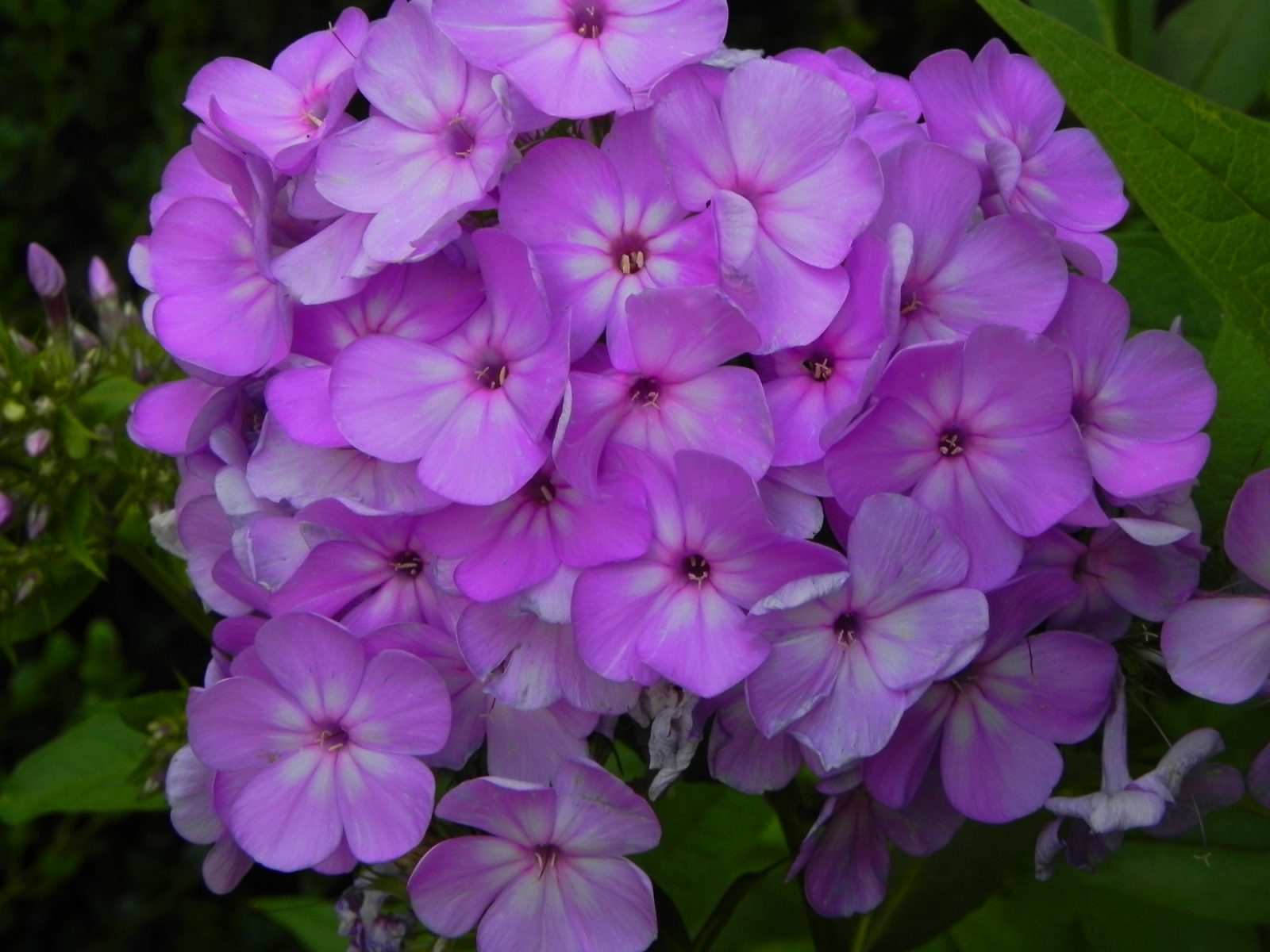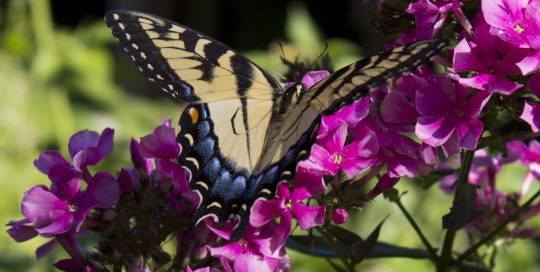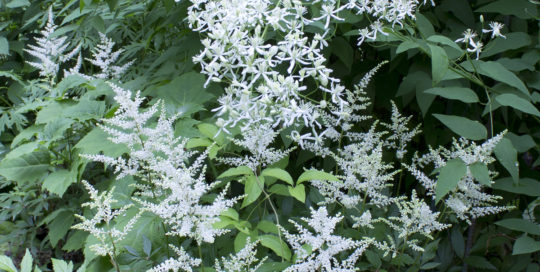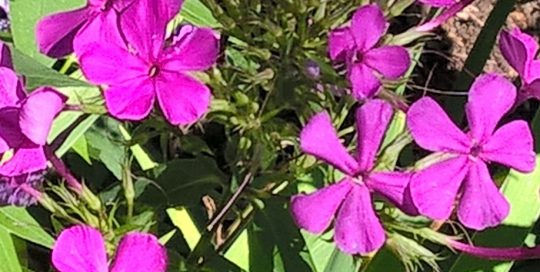Butterflies Love Phlox
Another thing that makes summer Phlox even more appealing is the fact that it attracts butterflies. The nectar-laden blooms open just in time for the third and fourth generation of Monarchs. These beauties, along with swallowtails, have become a treasured part of my August garden. Phlox also attracts hummingbirds and dragonflies. I recommend planting multiple Phlox varieties because the more color the better – at least in my garden.
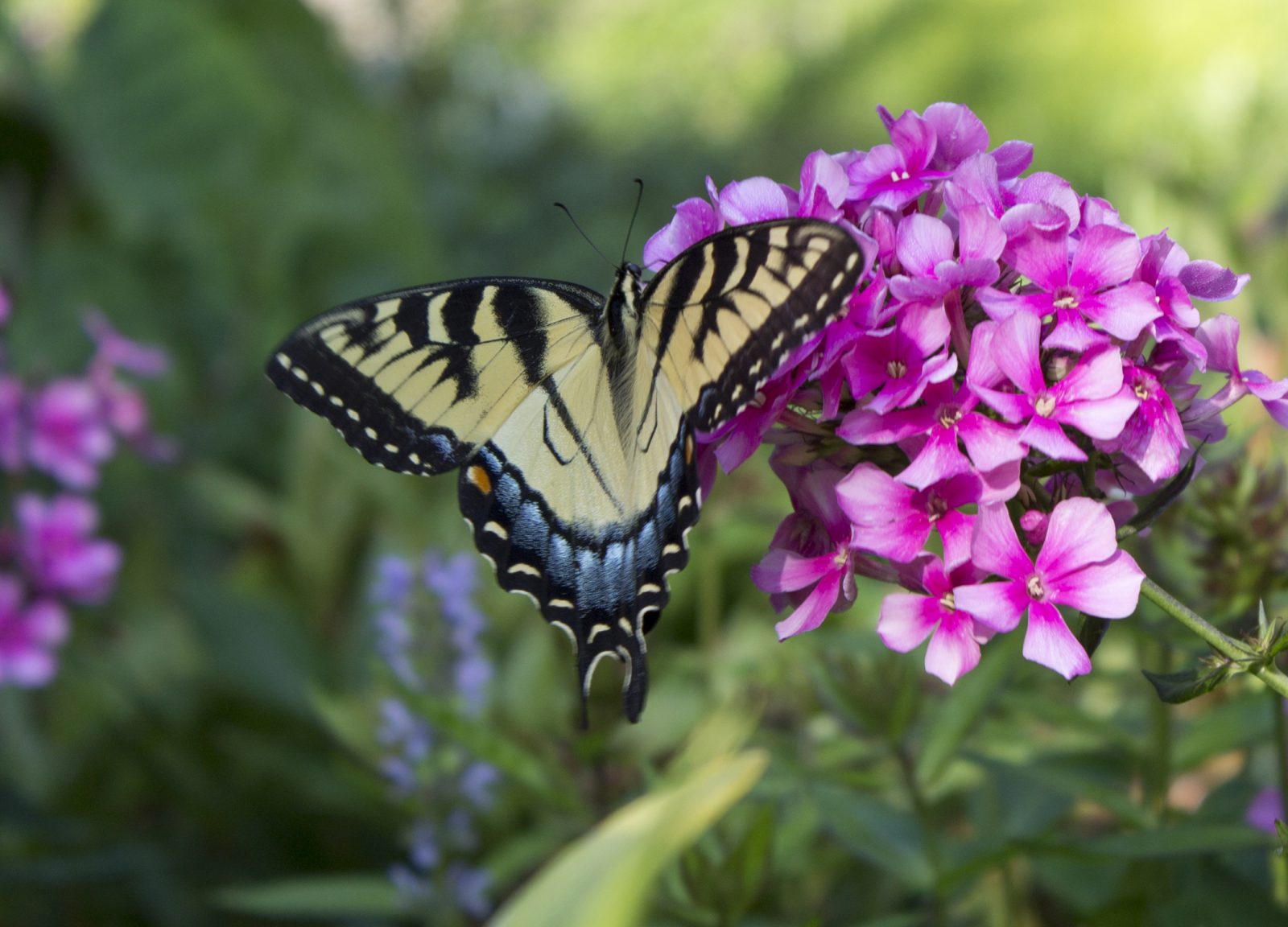
Tiger Swallowtail Butterfly on Phlox ‘Maiden America’ photo by Jean Starr
If you don’t mind a bit of petal drop after cutting, Phlox make fragrant and beautiful bouquets. I suggest picking when just a few of the flowers are open on each panicle. Phlox combines beautifully with coneflowers.
A Short History of Phlox
Even though Phlox paniculata is native to the U.S., it really gained attention from European botanists in the early 1800’s. Commercial growers made selections from seedlings, naming and marketing them to the gardening public. Interest petered out around 1860, however. It peaked again at the start of the 20thcentury when breeders from both Europe and America introduced new cultivars. An American nursery catalog published in 1917, Phlox: A Natural History and Gardener’s Guide by James H. Locklear, offered 584 named selections of tall garden phlox (Phlox paniculata).
Another bout of popularity emerged between the two World Wars, when breeders from England, Germany, and the former Soviet Union introduced new selections of summer Phlox. Locklear writes, “The earlier modern selections of P. paniculata were made during the mid 1900’s in England by Symons-Jeune and Alan Bloom, and in Germany by Georg Arends.
Phlox in all its forms remained popular after WWII, and throughout the 60’s, when Alan Bloom of Bressingham Gardens in England became a top breeder. He introduced varieties still available today, including ‘Frans Schubert’. Present day Phlox paniculata breeding takes place for the most part in The Netherlands and the United States.”
You Can Avoid Phlox Powdery Mildew by Selecting a Resistant Variety
One of the most prevalent issues with summer Phlox is powdery mildew, a fungal disease that typically affects plants that are culturally challenged. Just as the Phlox begins to bloom, its leaves look like they’ve been doused by a diluted white glue.
Today, there are several resistant varieties on the market, including one of the first, ‘David’. Discovered by F.M. Mooberry in the parking lot at the Brandywine Conservancy in Chadd’s Ford, PA, it thrived in the gardens there. In 1987 it was marketed as Phlox ‘David’, named for F.M.’s husband. It was named Perennial Plant of the Year in 2002 by the Perennial Plant Association.

